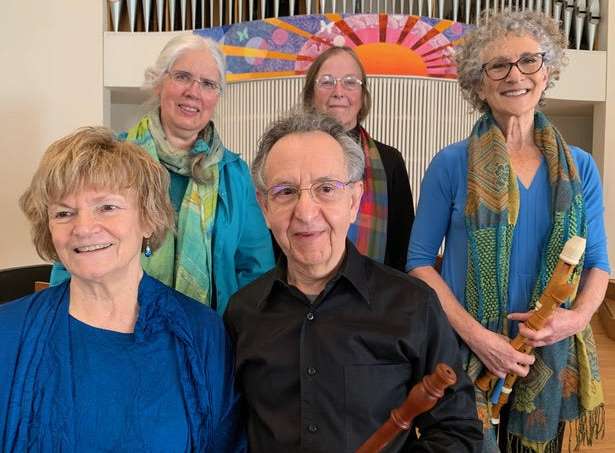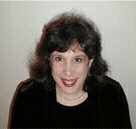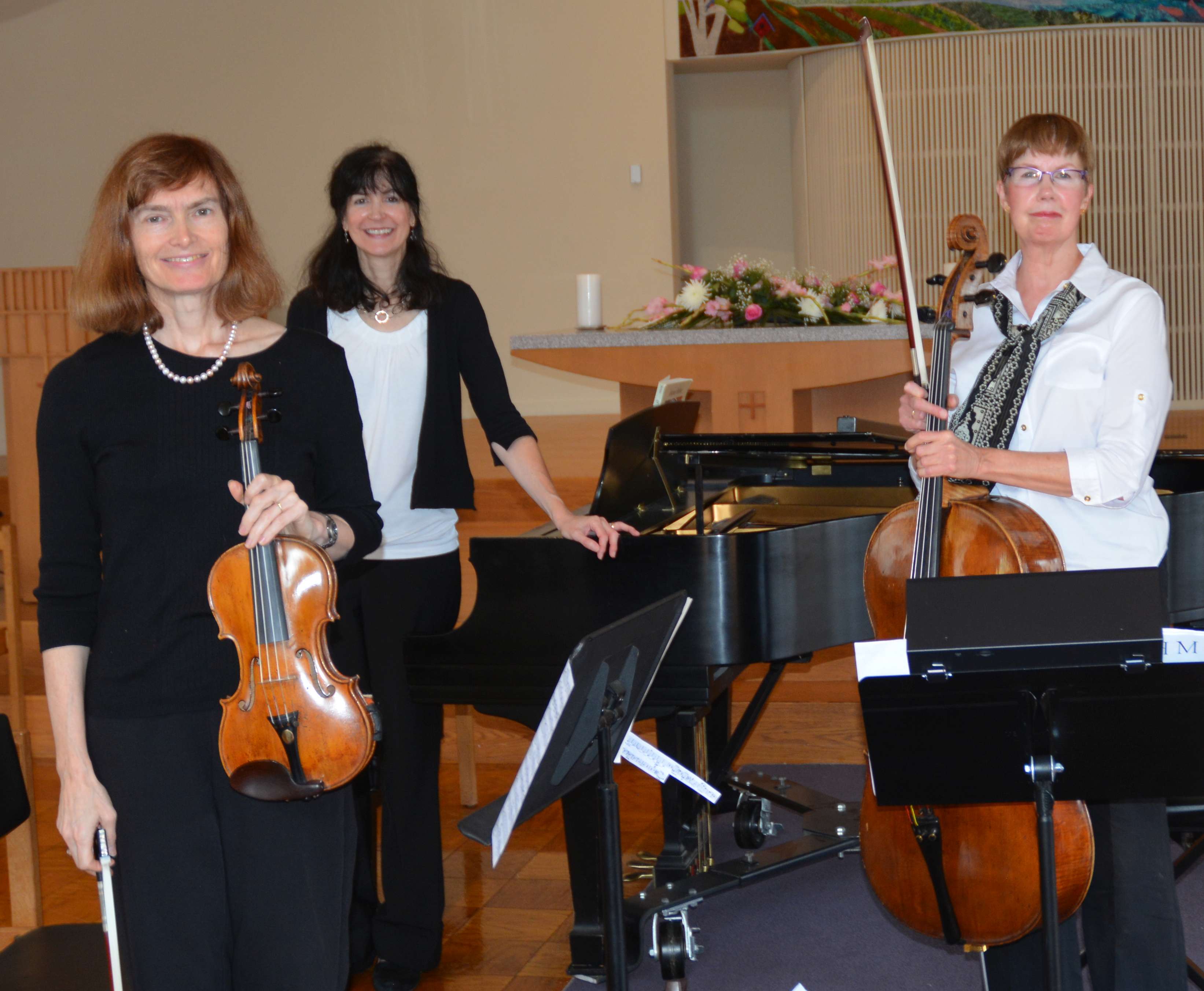
5/11/2023: Music by Members
Part I: A Baroque Sampler
Program
1. François Chauvon: Onziéme Suitte, from Tibiades, for oboe and basso continuo
--Prelude. Gracieusement
--Courante. La Duché. Légérement
--Tendrement, et legerement. La Samaritaine
--Chaconne. La Listenay
2. Anna Bon di Venezia: Sonata in D, Op. 1, No. 4 for flauto traverso and basso continuo
--Mvt. 2: Andante
--Mvt. 3: Allegro assai
3. Georg Philipp Telemann: Quartet in D minor, TWV 43:d1, for alto recorder, flauto traverso, oboe, and basso continuo
--Andante
--Vivace
--Largo
--Allegro
4. George Frideric Handel: Lascia ch'io pianga (aria from Rinaldo, Act II)
Performers
Deborah Robin, alto recorder
Leo Snow, flauto traverso
David Schonfeld, baroque oboe
Laura Mazza-Dixon, viola da gamba
Anne Mayo, harpsichord
Susan Mardinly, soprano


Program Notes
François Chauvon is one of the lesser-known masters of the French Baroque. We know that he studied with François Couperin, but we don't know his dates of birth or death. He published a number of works between 1712 and 1736, including songs, cantatas, and suites for solo instrument with continuo. The Tibiades, a collection of 12 suites for flute, oboe, or violin, appeared in in 1717. Today you will hear 4 of the movements from the eleventh of these suites. It was published in D major, but we have transposed it down a step for the oboe, as would likely have been done at the time.
Anna Bon (1738 - after 1769) was the daughter of two famous Italian opera personalities, Rosa and Girolamo Bon. It appears that the family and Anna traveled to and lived in several places including Venice, Bayreuth, and the court of Count Nicolas Esterhazy. As a child she was enrolled in the prestigious school, Ospedale della Pieta in Venice. It enjoyed a reputation for music education and performance. (Antonio Vivaldi taught and composed there from 1703 to 1740.) Her VI Sonate da camera per il flauto traversiere e violoncello o cembalo: opera prima were published in 1756. Bon also published a set of harpsichord sonatas and a small amount of vocal music. Although it's not clear when Anna died, different sources suggest she was living in Venice.
Georg Philipp Telemann (1681-1767) was one of the greatest composers of the High Baroque and one of the most prolific composers of all time. He produced countless works in all of the contemporary genres. Unlike Bach and Handel, Telemann almost never repurposed previous compositions. His fertile imagination could always come up with new material. The Sonata à 4 or Quartet in D minor, appeared in 1733 as No. 2 of Musique de table, Part II, a splendid compendium of some of Telemann's finest compositions for various instrumental combinations. Telemann scored this quartet for alto recorder, two flutes, and basso continuo. (Unusually, he indicated that the solo recorder part may also be played by a solo bassoon, 2 octaves lower.) We have slightly modified the second flute part to be playable on oboe. We think our adaptation works well; we hope you do too!
George Frideric Handel (1685-1759) was also a prolific and popular composer. Although he wrote plenty of instrumental music, he was best known, in his time, as a vocal composer. He wrote over 40 operas. One of his most famous arias, “Lascia ch'io pianga”, first appeared in Scene I of the opera Almira, in 1705, in the form of an instrumental sarabande. Handel then used the tune for the aria "Lascia la spina, cogli la rosa", or "Leave the Thorn, Take the Rose", in Part II of his 1707 oratorio, Il trionfo del Tempo e del Disinganno. Four years after that, in 1711, Handel used the music again, this time for his London opera, Rinaldo, and its Act 2 aria, "Lascia ch'io pianga" ("Let me weep"), a heartfelt plea for her liberty addressed by the character Almirena to her abductor Argante. Rinaldo was a triumph, and it is with this opera that the aria is chiefly associated. The libretto for Rinaldo was written by Giacomo Rossi from a scenario provided by Aaron Hill.
Part II: Dvorák Trio
Program
Antonín Dvorák (1841-1904): Piano Trio No. 3 in F minor, Op.65 (1883)
--Mvt 2: Allegretto grazioso (C-sharp minor)
--Mvt 3: Poco Adagio (A-flat major)
Performers
Lisa Kugelman, violin
Fran Bard, cello
Stacy Cahoon, piano

Program Notes
Antonín Dvorák (1841-1904) studied violin, piano, and organ in his native Bohemia and became active in the musical life of Prague. He came to wider prominence in 1874 when he applied for, and was awarded, the Austrian State Prize for Composition. Johannes Brahms, one of the judges, became a staunch proponent of Dvorák's music. Dvorák composed prolifically in all genres and evolved a distinctive fusion of post-Wagnerian Romanticism and Czech folk elements. He composed his third Piano Trio in 1883, at the height of his powers. Dvorák spent the years 1892-1895 in the US, then returned to Prague, where he continued to conduct and compose actively until his death, at age 62, from an undiagnosed cause.